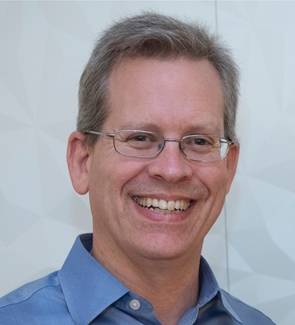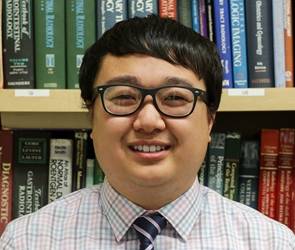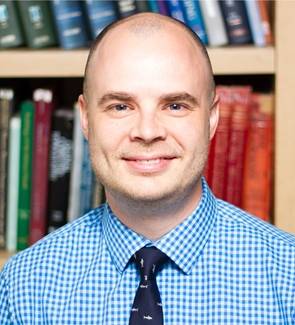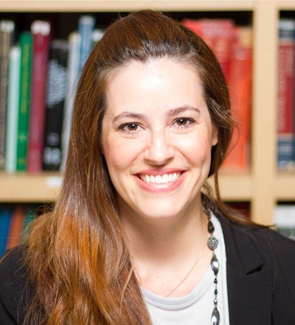In early March of 2020, administrators at Maimonides Medical Center in Brooklyn, New York, knew they had a problem. Their models predicted that if the rate of COVID-19 infections in New York City reached that of cities in Italy and other European countries, the hospital would need three to four times more beds to accommodate the surge of patients. In response, they formed a plan to expand the 700-bed facility to 1,000 regular beds and 500 intensive care unit (ICU) beds. While adding beds was important, administrators faced an even tougher challenge: They needed more frontline physicians to care for the expected rise in COVID-19 patients.
With this in mind, administrators asked program directors and department chairs throughout the hospital to free up as many of their residents and attendings as possible to serve on the COVID-19 floors, including the surge ICUs and COVID-19 wards. Recognizing the seriousness of the crisis at hand, Evan G. Stein, MD, PhD, residency program director and director of neuroradiology at Maimonides, immediately reviewed his schedule to see how many of his residents he could make available to support the response effort.

Evan G. Stein, MD, PhD, residency program director and director of neuroradiology at Maimonides Medical Center, helped develop a team of interventional radiologists and radiology residents to perform procedures wherever they were needed during the crisis. |
“I determined that I could run the department with two residents on a rotating basis,” Stein recalls. “I had already picked five residents to use for the central line team; this would be their responsibility from the beginning of the surge until the end.” That left Stein with nine residents who could help with the surge response on any given day. The residents on that list changed every day depending on which two residents were working in the department.
“I clearly remember arriving to work at the end of March,” Stein recalls. “Tents were set up in front of the hospital and emergency department. Since the number of patients that we were imaging was falling, I felt it would be important for radiologists and radiology trainees to help, even if it meant getting outside of our comfort zones. We were part of a community that was going to need our help.”
In the weeks that followed, administrators dedicated over a dozen medical floors and nine surge ICUs to accommodate COVID-19 patients. Stein partnered across disciplines to develop a team of interventional radiologists and radiology residents to place lines and perform procedures wherever they were needed in the hospital. “Initially, this central line team worked mostly on the COVID-19 floors,” Stein notes. “But after a few days, when we all realized how efficiently the team worked together, they were asked to do more of the lines and procedures in the ICUs, leaving the teams dedicated to making decisions about the clinical care of so many patients free to do their work.”
Forming a Team
When Stein heard that administrators were looking for residents and attendings to help with the surging number of COVID-19 patients, he leveled with his residents. “I told them that the hospital and community needed our help,” Stein recounts. “Even if what we were asked to do was outside of our comfort zone, we would support the cause. And my message wasn’t just to the residents; I made it clear that I would soon ask our attendings and technologists to step up in ways we’d never asked them to before.”
As a first step, Stein and Maimonides’ chief of interventional radiology (IR), Debkumar Sarkar, DO, approached Rebecca J. Rhee, MD, the surgery residency program director, and suggested that they create a team of qualified residents and IR physicians. This new team, says Stein, “would place central lines and bring simple procedures, including ultrasound-guided thoracentesis and paracentesis, directly to the patients who needed them. Performing these procedures at the bedside would eliminate the need to transport patients through areas of unknown levels of infection and mitigate the COVID-19 exposure to IR nurses and technologists. It would also keep IR suites available for more urgent procedures that might have become necessary as a consequence of the infections.”
After gaining approval for their plan from the chief medical officer and other physicians in medicine and emergency medicine who were in charge of organizing the COVID-19 response, Stein and Sarkar began building a team to work directly with COVID-19 patients. The line team, as it was called, would perform a single task: provide bedside procedures for patients in need throughout the hospital.
The team consisted of three IR faculty and five radiology residents, the latter of whom the IR director cleared to place central lines and perform other basic bedside procedures. Sarkar selected residents who had completed a number of ultrasound-guided procedures with him or one of his colleagues and who he felt confident could work independently. Three radiology residents at a time worked on this central line team for 12 hours a day to place central lines and perform bedside ultrasound-guided procedures on patients in the surge ICUs and COVID-19 floors. They were overseen by one of the IR attendings while the other two IR attendings staffed the angio suite.
“The chief residents and IR attending oversaw the lines team,” Stein explains. “In order to balance virus exposure and share the workload in an environment requiring extensive personal protective equipment (PPE) — the residents were working on the necks of coughing patients — the lines team found that three residents and one back-up attending provided sufficient coverage.”
Responding to the Surge
By late March, New York City’s COVID-19 infection rate was on a steep upward trajectory. Stein divided his responsibilities between the neuroradiology department and overseeing the various assignments of radiology residents both in the radiology department and, initially, on the line team. At the same time, he had to ensure that the radiology residents’ educations continued apace.

First-year radiology resident David Vu, MD, served on a COVID-19 surge team and cared for up to 10 patients at a time. |
Then, two weeks after Maimonides’ new IR surge team formed, the medicine department approached radiology with a significant request: Could radiology residents act as medicine interns and help on the COVID-19 floors and in the new surge ICUs? This would mark a significant increase in responsibility in the surge effort, requiring radiology residents to round on patients every morning, work with the medicine teams to determine which treatments patients would receive, and monitor patient progress.
“The number of patients was starting to climb beyond what the medicine residents and interns could care for without additional manpower,” notes Stein. “During the most severe part of the pandemic, we anticipated that patient care would be executed according to protocols,” explains Stein. “For instance, if a patient’s oxygen level got to a certain point, contingent steps would need to be taken,” he says, noting that this type of care could be executed by physicians without specialty training as long as they had adequate oversight from, among others, infectious disease specialists and intensivists. “The hospital would need boots on the ground to get the grunt work done,” says Stein, “and my residents would be part of this effort.”
Diagnostic radiology chief resident Brennan Barrett, DO, led the team of radiology residents in partnership with Nathan Cornish, DO, radiology co-chief resident, and IR attendings oversaw this group. Stein explains that Barrett and Cornish acted as his go-betweens for all resident assignments because they were the chief residents. “However, given that they were both fourth-year residents bound for careers in IR, they were coincidentally the most qualified residents to lead the central line team,” Stein says.
Barrett helped the team prepare for their time in the surge ICUs and on the COVID-19 floors, learning new skills along the way. “I believe that leading and organizing the surge team has proven invaluable to my growth as a physician,” Barrett notes. “Working as multidisciplinary medical teams was also beneficial for patient care. Doing so allowed each specialty to gain further understanding of each other’s capabilities and approach to medical problems.”
Gearing Up for Service
Initially, some of the third-year radiology residents under Barrett’s supervision were unsure about performing the raft of new tasks. Although they were qualified to place central lines on their own, it had been several months since some of the third-year residents had performed IR procedures, and they needed a refresher on proper techniques.
In response, Barrett and Cornish partnered with each third-year resident until everyone was comfortable in their new roles. “For example,” Barrett elaborates, “I taught the residents how to be self-sufficient in preparing and gowning while maintaining a sterile field, particularly in light of the additional PPE required. This was invaluable for both efficiency and reducing PPE consumption.” Hospital-provided training videos also helped acclimate everyone with their new responsibilities.
“Watching our residents rise to the occasion of assisting their colleagues and serving patients made me very proud,” Stein notes. “I worried every day about how the time away from imaging interpretation was going to impact both the junior and senior residents. But I saw that many of them were exercising skills in competencies — communication, systems-based practice, and patient care to name three — that they don’t always get to practice.”
Contributing with Purpose
Third-year radiology resident Isaac Boyack, MD, had some initial misgivings about participating in the program. But his apprehensions transformed into a sense of purpose as his work on the COVID-19 floors and in the surge ICUs intensified. “I was nervous about COVID-19 exposure, and admittedly, I felt timid about performing procedures independently,” Boyack explains. “My apprehension quickly gave way, however, with the assistance of the attendings who supervised us and with the support of adept fourth-year residents committed to IR fellowships.”

As a result of his work on the COVID-19 floors and in surge ICUs, third-year radiology resident Isaac Boyack, MD, says his ultrasound skills and comfort level performing procedures vastly improved. |
Boyack adds that his ultrasound skills and comfort level performing procedures vastly improved with daily repetition. “I am grateful I could learn and improve while contributing to the needs of the patients and the hospital, and I will always remember my unique experience during the pandemic,” he says.
First-year radiology resident David Vu, MD, had a similarly memorable experience serving on one of the surge teams overseen by the internal medicine department. Since Vu had completed his intern year approximately nine months prior and his clinical knowledge was still fresh, he proved an ideal choice to rotate through the ICU on some night shifts while also staffing the COVID-19 floors for two weeks. Filling the role of an intern, Vu cared for up to 10 patients at a time.
“I took part in pre-rounding, rounding, calling consults, writing notes, admitting new patients, updating patient handoffs in the electronic medical record, and updating families daily since no visitors were allowed in the hospital’s COVID-19 units,” Vu explains. “It was a gratifying experience directly treating COVID-19 patients and helping our internal medicine colleagues during the height of the pandemic in New York City.”
Seizing New Opportunities
As they assisted in the ICUs and on the COVID-19 floors, some of the radiology residents learned new skills and polished others. For example, Stein says, while residents were rotating through the clinical floors, they also worked for several days a week taking portable chest radiographs. The demand for these radiographs had increased tremendously because COVID-19 progression is monitored with chest radiography, mostly performed as portable imaging.
“The department was concerned that if technologists became ill, the residents — and possibly the attendings — might need to step in and take radiographs, rather than just interpreting them,” observes Stein. “The only way to train people in how to do this was to send them out on the floors.”
Joining the surge units also allowed the radiology residents to demonstrate their value to clinical colleagues. Vu asserts that his radiology background positioned him well to manage patients. “My radiology training helped me guide my clinical colleagues on imaging appropriateness,” Vu says. “At times, I was also able to explain the radiology re-ports and identify imaging patterns for certain diseases.”
Helping Remotely
For radiology residents who weren’t working on the floors, other opportunities to assist with the COVID-19 response presented themselves. (Read how some residents communicated with patients' families in
this Imaging 3.0 case study.) One opportunity involved providing remote support to the hospital’s newly opened surge ICUs. Marcela Marsiglia, MD, was among several radiology residents who eagerly volunteered to support the ICUs by providing exam results and other care coordination data through secure messaging. A urology attending assigned her to support a single surge ICU, which, Marsiglia states, helped her become familiar with the patients in the unit as well as the medical team.
“The ICU team reached out to me for help with things like expediting tests,” Marsiglia explains. “I also provided them with daily summaries of the radiological findings for all of the patients in the unit, clearly indicating findings that needed to be addressed.”
Marsiglia was available from 7 a.m. to 7 p.m. every day to support the ICU team from her home workstation. The work that she and the other radiology residents did saved time, which allowed the clinicians to provide patients with more hands-on care. “The clinicians valued having radiology as part of their team, and they appreciated the multidisciplinary collaboration,” Marsiglia says.

Marcela Marsiglia, MD, was among several radiology residents who volunteered to support the ICUs by providing exam results and other care coordination data through secure messaging. |
Allison Polland, MD, director of the Pelvic Floor Center at Maimonides who organized the ICU oversight program, notes that remote workers like Marsiglia greatly helped ease the workload burden on those whom she oversaw during the crisis. “The radiology residents were able to work as members of the ICU team, remotely putting in orders and following up on lab results,” says Polland. “This served to increase the ICU care team workforce without increasing COVID-19 exposure. It was invaluable to have remote physician support.”
Marsiglia’s surge ICU teammates could ask radiology-related questions and get quick answers. “I was able to provide directions on things that needed to be addressed based on imaging, such as a patient’s feeding tube not being in the appropriate position. The team was overwhelmed and lacked time to carefully check images and radiology reports. They would thank me for giving them direct feedback on imaging for all the patients in the unit.”
Caring Made Personal
Although the radiology residents’ shifting duties brought added stress, they also provided opportunities for direct patient interaction that the residents treasured. During Vu’s two weeks on the COVID-19 floors, his most memorable experience involved caring for an elderly gentleman who himself was the primary caregiver for his wife. “Each day I would go into his room and call his daughter using his cell phone, and I’d put it on speaker to allow them to converse. Later on, I would call the patient’s daughter, who lived out of state, to give her daily updates on her dad’s medical condition.”
While Vu admits that at times he felt hopeless caring for COVID-19 patients, he says that he learned new skills that he plans to leverage in his work as a radiologist. “This experience has given me the benefit of being able to correlate clinical findings with radiographic findings, especially on chest CT,” Vu says. “I can take what I learned to the reading room to improve my skills as a radiologist.”
Remaining Vigilant
In the fall of 2020, COVID-19 infections fell to below pre-surge numbers in New York City; however, in the months since, infections have been on the rise nationwide. To radiology groups in those affected areas, Stein has some straightforward advice: Keep open lines of communication at all times. “Communication with the residents, attendings, and staff about the different tasks is key. Also, matching people to tasks they are comfortable with was extremely important to our group. Everyone wants to help and be part of a team.”
To this end, Maimonides leadership held weekly online town halls. “During these town halls, department heads singled out groups and individuals for special attention,” Stein notes. “That provided a great deal of good feeling throughout the hospital.”
Similarly, Stein facilitated a high level of information sharing within his own department. “I held regular meetings to give updates and field questions,” Stein says. “In the beginning, I don’t think I gave my residents enough of an opportunity to convey how they felt. Fortunately, they told the chief residents, and the chiefs told me. This allowed me to make adjustments — giving more notice before assigning people to work on the floors or in the ICUs, for instance.”
Looking back, Stein remains impressed with his residents’ resourcefulness in the face of great odds. “What I learned over just the first few days of the surge was that our residents had the intangible characteristics of grit and determination,” Stein recalls. “This virus creates a lot of fear in people and, at first, I didn’t appreciate how big of an impact that would have on me and the residents. But they all rose to the occasion and contributed a tremendous amount to patient care.”





